#Nature Communications
Explore tagged Tumblr posts
Text
A phonetic alphabet for sperm whales proposed by Daniela Rus, Antonio Torralba and Jacob Andreas.
The open-access study published in Nature Communications titled 'Contextual and combinatorial structure in sperm whale vocalisations', has analysed sperm whale vocalizations and as part of that, a phonetic 'alphabet' has been proposed for them.
So cool. Dolphins next please.
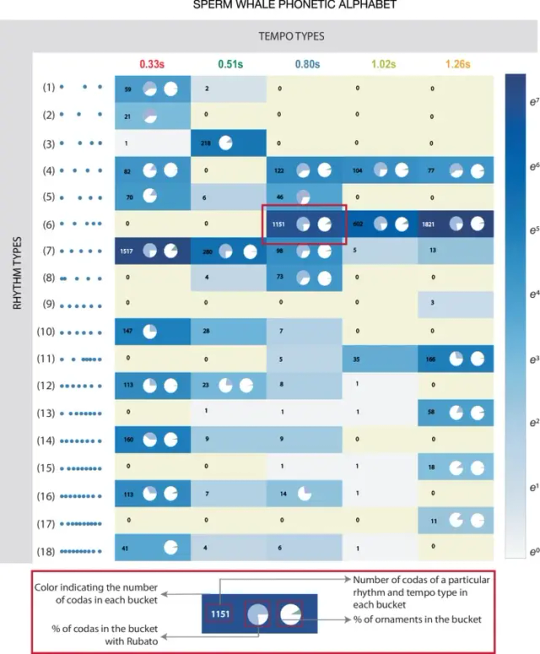
MIT news also did an article on this
#whale#sperm whale#cetacean#language#animal language#animal vocalisation#click language#clicks#inspiration#conlang#language creation#spec bio#speculative biology#speculative evolution#speculative worldbuilding#speculative fiction#inspo#machine learning#ai#communication#phonetic#alphabet#so cool#cool shit#nature communications
63 notes
·
View notes
Text
COVID-19 vaccines may reduce risk of heart attack, stroke: Study
Urja Sinha at NewsNation:
(NewsNation) — The COVID-19 vaccine and its booster shots may help reduce the risk of heart attack and stroke, a new study reports. The study shows the rate of certain cardiac incidents like heart attack and stroke was up to 10% lower in the 13 to 24 weeks after the first dose of a COVID-19 vaccine. Following a second dose, the incidence was up to 27% lower after receiving the AstraZeneca vaccine and up to 20% lower after the Pfizer/Biotech vaccine. The study, published in Nature Communications, was conducted by a team of researchers from the Universities of Cambridge, Bristol and Edinburgh studied health data from nearly 46 million adults in England between December 8, 2020, to January 23, 2022.
COVID vaccines may reduce risk of heart attack and stroke, per a study from the Nature Communications journal in the UK.
#Coronavirus Vaccines#Vaccines#Booster Shots#Heart Attacks#Health#Strokes#Nature Communications#Studies
19 notes
·
View notes
Text

A recent study in Nature Communications suggests that by 24 months, signs of heightened immune activity in most long-COVID patients will have returned to normal levels. Pictured above is a composite colored scanning electron micrograph of immune cells—including a single macrophage, two dendritic cells, and numerous white blood cells—involved in a cytokine storm, a life-threatening immune disorder. Cytokines are important for normal immune response, but when too many are released simultaneously it can be harmful.
COMPOSITE MICROGRAPH BY STEVE GSCHMEISSNER, SCIENCE PHOTO LIBRARY
#steve gschmeissner#photographer#national geographic#composite micrograph#science photo library#nature communications#long-covi#immune cells#cytokine storm#immune disorder#health#nature
13 notes
·
View notes
Text
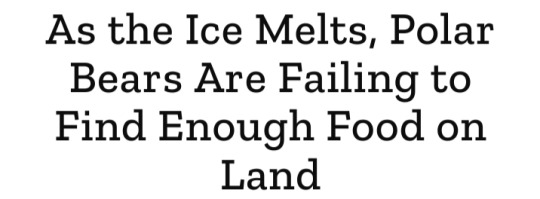
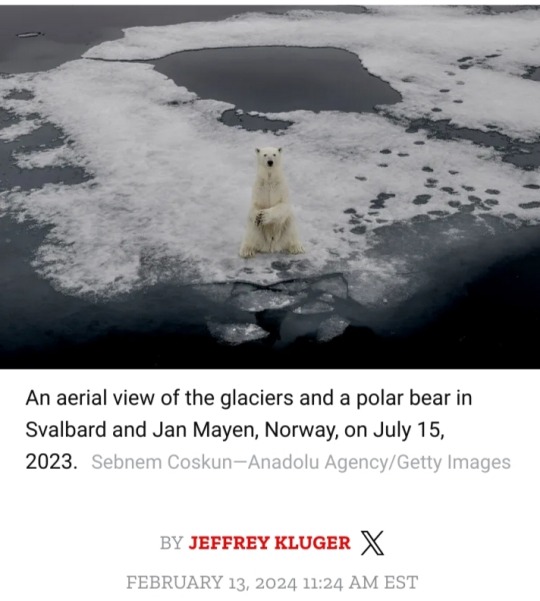
It’s not easy to swim 175 km (109 mi.) when you’re starving to death. It’s not easy either to try to survive when you’re shedding body weight at a rate of 1 kg (2.2 lbs.) a day.
And it might be hardest — or at least most tragic — of all if you’re a nursing mom and your calorie intake has dropped so low that you can no longer produce the milk you need to care for your young.
As a new paper in Nature Communications reveals, all of those challenges and more are facing the world’s polar bears, thanks to vanishing sea ice in our warming world, denying the animals a platform that they need to hunt for seals.
If the trend isn’t reversed soon, the estimated 26,000 polar bears in the wild could start to lose their hold on survival before the middle of this century.
The researchers were less interested in establishing the fact of the bears’ food plight; scientists are already aware of that problem.
What they were more focused on learning was both how gravely the nutritional loss is affecting the animals’ health and the alternative food sources they’re scrounging for on land.
To do their work, the scientists followed 20 different polar bears in Manitoba, Canada, from 2019 to 2022, fitting them with GPS trackers and video collars and periodically tranquilizing them and analyzing their blood, body mass, daily energy expenditure — basically a measure of calories coming in versus calories going out — and more.
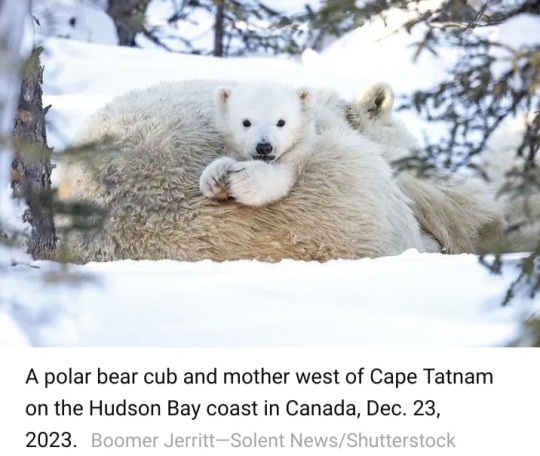
“The polar bears in Hudson Bay [Canada] are probably at the edge of the range at which they can survive right now,” says Anthony Pagano, a research biologist with the U.S. Geological Survey and the lead author of the paper.
“Most of the modeling work suggests that around 2050, they are going to be on land and away from their primary habitat [on the ice].”
The contraction in range of the Hudson Bay community is likely to be reflected in the ranges of the 18 other polar bear subpopulations scattered throughout the Arctic as well.
Across the arc of the study, the data Pagano and his colleagues gathered was troubling.
Weight loss varied from bear to bear, with the daily loss of 1 kg representing just an average.
Some of the subject animals dropped up to 1.7 kg (3.75 lbs) every 24 hours.
That may not seem like much when an adult male polar bear can tip the scales at 550 kg (1,200 lbs) and a female at 320 kg (700 lbs), but it can add up fast.
And with less available to eat, the hungry bears have to travel farther and farther distances to find their next meal.
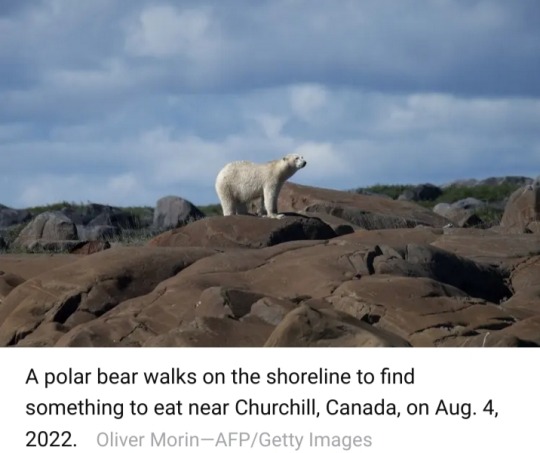
The individual that swam 175 km — a young female — set the record among the bears studied, but another, older female also covered 120 km (75 mi).
The endurance swims in search of food are energy-intensive and often fruitless for the bears.
They are efficient hunters when they’ve got the purchase of ice beneath them, Pagano and his colleagues explain, but they are clumsy when they are going after seals and trying to swim at the same time.
That leaves them scavenging on land for foods they would not ordinarily eat — and getting little payoff for their efforts.
“Polar bears are feeding on ducks and geese — catching them when they’re flightless and molting — as well as on their eggs,” Pagano says.
Other foods on the desperate bears’ menus included berries and other vegetation, bones, antlers and, in one case, a beluga whale carcass.
None of that fare is as calorie-rich as a steady diet of live, blubber-packed seals.
Some of the bears vigorously sought out these alternative sources of nutrition; others opted for a different strategy: resting and conserving the energy contained in their body mass.
The latter approach costs stored calories, but so does the former, as all of the plodding and searching burns through energy too.
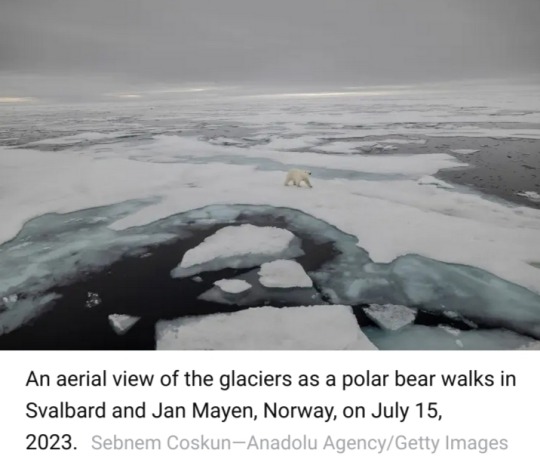
“The amount of body tissue they were burning to try and find those terrestrial foods was basically the same as what they’d get from eating those terrestrial foods,” Pagano says. “So there’s no actual benefit.”
The researchers were surprised to find that the bears were going through not just fat stores to compensate for the poor rations but lean muscle tissue too.
Pagano is not certain why their metabolisms would adopt that strategy, but he has some ideas.
“There's some thought that burning lean body mass might be more energetically efficient in some respects relative to burning body fats,” he says.
“Also, conserving their body fat might provide them better thermal regulation once the winter and the ice return.”
That seasonal freeze-over is shorter than it used to be — though not by a lot.

In the 1980s, polar bears were on land for about 110 days out of the year, with no need to eat terrestrial foods since the fat deposits they’d accumulate thanks to wintertime seal-hunting was enough to carry them the rest of the year.
Now they're off the ice for 130 days on average.
It’s a measure of the nutritional knife’s-edge on which the bears operate that just 20 days can make the difference between whether they live and thrive or starve and die.
The individuals most likely to perish when food supplies are poor are young adults — due to their less-developed hunting skills — and cubs, whose principal source of nutrition, their mother’s milk, can vanish in lean times.
“If females are fasting for extended periods, they will actually stop lactating,” says Pagano.
Full-grown bears are by no means immune to danger, however.
The authors cite earlier research predicting that the adult male population could decrease by 24% if the ice-free summer season increases to 180 days.
This is especially so given the enormous energy intake — about 22,500 calories per day — that the big males need to maintain their body weight.
Polar bears aren’t the only species menaced by these findings. Humans are in harm’s way too.
The more time bears spend off the ice and on land, the greater the likelihood they will wander into cities and towns in search of something to eat — and residents could easily be hurt or attacked if they get in the way of the hungry animals.
People might also even be seen as sources of prey.
���When polar bears are on land, they act like other bears and become omnivores,” says Pagano. “It does raise the potential for human-bear interactions.”
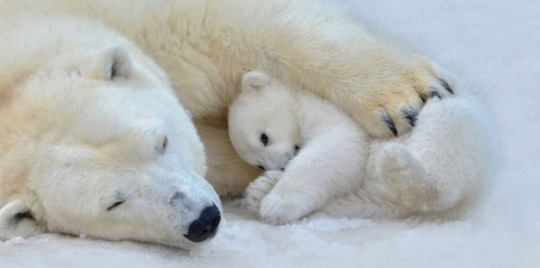

🆘🐻❄️🥺
#polar bears#sea bears#Ursus maritimus#U.S. Geological Survey#Manitoba#Canada#Nature Communications#climate change#wildlife conservation#food source#nutritional loss#animal health#marine mammals#Arctic Circle
11 notes
·
View notes
Text
UV lamps in nails salon
Hello!
Just yesterday, I saw an article with this headline:

It caught my attention because, in Spain, where I currently live, it is fashionable to go to the nail salon every 2 weeks and have a perfect manicure.
The article discusses how UV lamps used to dry nails can cause DNA alterations and cell death. In addition, they found that a single 20-minute session led to 20-30% of cell death, and 3 consecutive 20-min exposures caused 65-70% of cell death. These UV lamps use a wavelength of 340 to 395 nm. Higher levels of somatic mutations were revealed in the irradiated cells, with similar patterns in skin cancer patients.
Do you guys get frequent manicures? I'll read you in the comments.
#scientific writing#UV#chemistry#nails care#nailcare#medical writing#nature communications#dna damage#cell death#scientists#science
9 notes
·
View notes
Text
Per ora sembra funzionare per i topolini, per cui no a facili entusiasmi. Però la strada verso la prevenzione del contagio per via nasale è interessante.
2 notes
·
View notes
Text
So bouncy!😋
DMs open to submissions📥
#big beautiful breasts#big breasted women#big tiddy committee#hot as hell#huge hangers#huge tiddies#huge titts#jiggling titts#massive milkers#perfect breast#big breasted girl#booby trap#big natural breasts#amazing body#massive breasts#huge natural breasts#natural body#saggy breasts#big titis#massive juggs#saggy juggs#huge bewbs#so jiggly#hot titts#nice tiddies#bouncing titts#big tiddy community
11K notes
·
View notes
Text

👇👇 click 👇👇
#adult entertainment#artistic nude#beautiful tiddies#big tiddy committee#big tiddy goth gf#fat tiddies#hot titts#juicy tiddies#natural tiddies#nice tiddies#sexy tiddies#sexy babygirl#slim and sexy#sexy ebony#sexy and beautiful#photo sexy#sexy chick#sexy curves#sexy pose#self love#so hot and sexy#big tiddy baby#big tiddy community#big tiddy gf#big tiddy goth girl#big tiddy wife#bouncing titts#hot tiddies#huge tiddies#huge titts
12K notes
·
View notes
Text
Yenilikçi Dikiş İpi ile Hızlı Yara İyileşmesi
Çin’deki araştırmacılar, geliştirdikleri biyolojik olarak parçalanabilen polimere sarılı magnezyum içeren dikiş ipinin, mekanik-elektrik özellikleri sayesinde hareket edildiğinde elektrik alanı üretebildiğini duyurdu. Bu buluş, tıbbi alanında devrim yaratabilecek potansiyele sahip. Dikiş İpi ile Yara İyileşmesinde Önemli Gelişme Araştırmacılar, bir balonun sa��a sürtünmesiyle elektriklenmesi gibi,…
#biyolojik olarak parçalanabilir#dikiş ipi#elektrik alanı#enfeksiyon riski#hücre aktivasyonu#iyileşme hızı#magnezyum#Nature Communications#tıbbi araştırma#yara iyileşmesi
0 notes
Text
#huge titts#perfect breast#big tiddy community#free the tiddy#big tiddy baby#bouncing titts#big tiddy committee#huge tiddies#huge natural breasts
19K notes
·
View notes
Text
#large size#beautiful tiddies#big beautiful breasts#big breasted women#big breats#big juicy titts#big natural breasts#big tiddy committee#big tittays#bouncing titts#massive tiddies#massive milkers#massive juggs#massive breasts#juicy tiddies#huge tiddies#big brests#huge titts#huge natural breasts#nice tiddies#saggy breasts#hot titts#saggy titts#big tiddy baby#big tiddy community#gigantic breasts#great breasts#lovely breasts#big tiddy gf#big tiddy wife
8K notes
·
View notes
Text
#saggy hangers#mature woman#big tiddy community#suckable nips#natural bewbs#huge bewbs#bikni girls#sexy and beautiful#large naturals#hot breast
17K notes
·
View notes
Text
Studi / La Terra più calda di sempre? 400mila anni fa: a svelarlo è la grotta della Bàsura in Liguria
ARCHEOLOGIA Studi / La Terra più calda di sempre? 400mila anni fa: a svelarlo è la grotta della Bàsura in Liguria
Redazione In Europa c’erano i pre-neandertaliani, l’emisfero settentrionale della Terra aveva meno ghiaccio di oggi e il livello del mare era circa 10 metri più alto. Siamo nel paleolitico inferiore, 400mila anni fa, un periodo chiamato MIS 11c, il più caldo del nostro pianeta negli ultimi milioni di anni. Secondo uno studio appena pubblicato sulla rivista Nature Communications, a cui ha…
#archeologia#clima#Dipartimento di Civiltà e Forme del Sapere dell’Università di Pisa#Elisabetta Starnini#Grotta della Bàsura#Liguria#MIS 11c#Nature Communications#Neandertal#neanderthal#notizie#paleoclima#paleolitico#paleolitico inferiore#studi#Università di Pisa
1 note
·
View note
Text
When I say "connect with nature" I don't just mean the aesthetic forests with deer and beautiful flowers.
I mean the weeds growing through concrete, the fungus that grows on the rotten shed, the nettles that always seem to return and the scary, spindly cellar spider in the corner of the bathroom.
Nature is not always pretty or magical - the pigeons and seagulls you swat at are nature too, the wasps and flies that hover by your meals are animals too, store-bought strawberries and the leaves that fall from your neighbour's tree are not all that different from the Giant Sequoias and it's seeds.
If you want to connect and understand nature, I mean *really* connect to it, in it's entirety, you have to seek out and learn about the ugly, scary and mundane things as well. You don't have to like it, just don't forget that it's there.
#queue-tie pie#witch#witchcraft#buriedpentacles#witchblr#witch community#nature#mother nature#pagan#paganism#green witch#witch blog#pagan witch
11K notes
·
View notes
